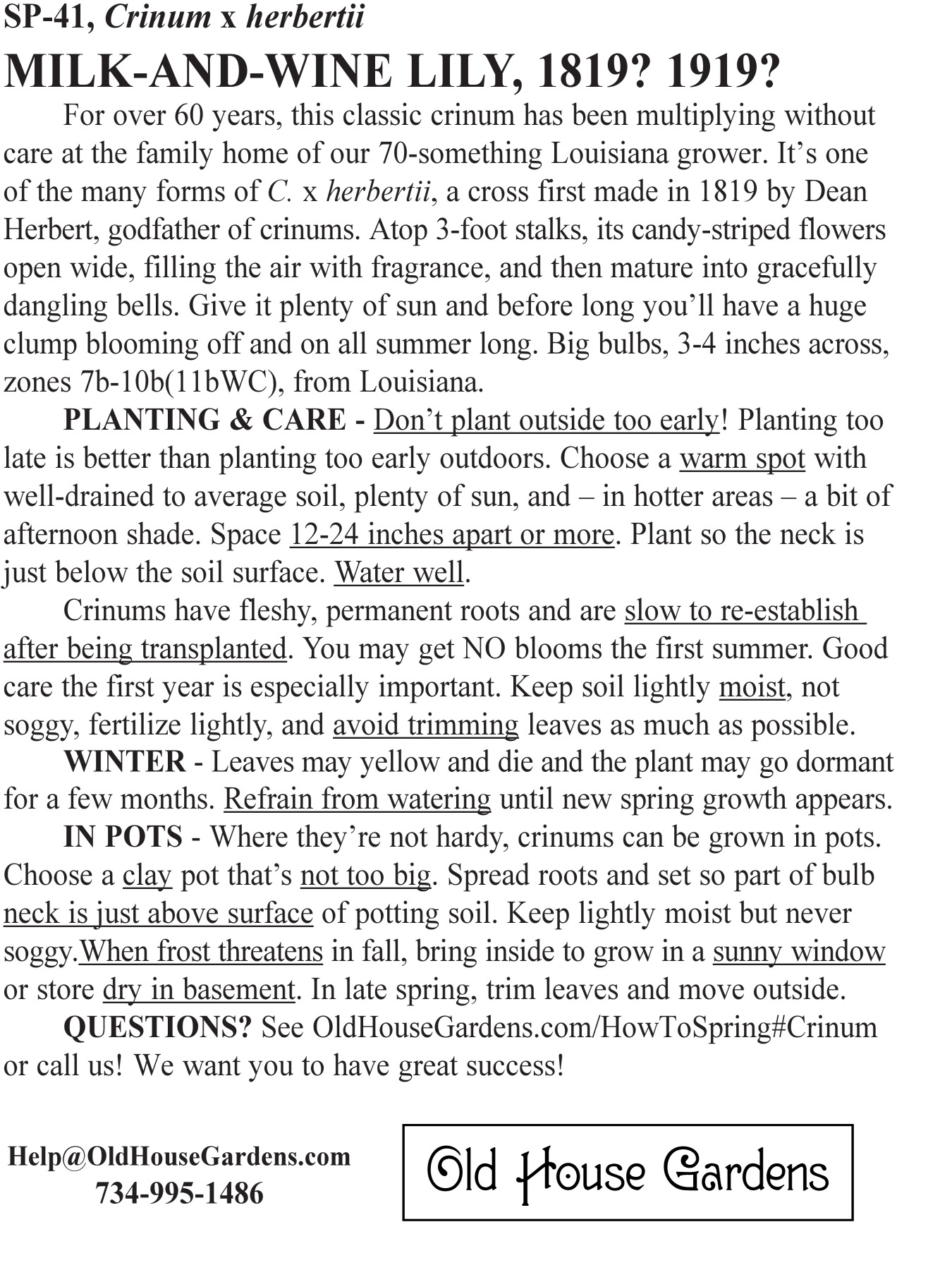|
|

 
|
|
For 60 years or more, this classic milk-and-wine lily has been multiplying without care at the family homeplace of our 70-something Louisiana grower. It’s one of the myriad forms of C. x herbertii, a cross first made in 1819 by Dean Herbert, the godfather of crinums. Its clusters of 10-20 candy-striped flowers on 3-foot stalks open wide, filling the air with fragrance, and then mature into gracefully dangling bells. Give it plenty of sun and in a few years you’ll have a huge clump blooming off and on all summer long. Big bulbs, zones 7b-10b(11bWC), from Louisiana.
SOLD OUT
|
|
SUB TYPE American ZONES 7b-10b(11bWC) or in pots HEIGHT 36” SOURCE Louisiana, America LIGHT full sun, half sun |
PLANTING & CARE“No crinum has ever died,” says Bill Welch, author of The Southern Heirloom Garden, and he’s only half-joking. Crinums are incredibly tough and adaptable, growing and blooming just about anywhere in zones 7-10, but here’s how to get the best out of your C. x herbertii. Choose a warm spot with well-drained to average soil, plenty of sun, and — in hotter areas — a bit of afternoon shade. Space 12-24 inches apart or more, remembering that crinums have long, exuberant foliage, they don’t like to be disturbed, and in time they’ll develop into ever-bigger clumps. Plant so the neck of the bulb is just below the soil surface. Water well. Crinums have fleshy, permanent roots and are typically slow to re-establish after being transplanted. Expect NO blooms the first summer as the bulb puts its energy into developing roots, leaves, and buds (inside the bulb) for next year’s bloom. Good care the first year is especially important. Keep the soil lightly moist but not soggy (crinums can survive in very dry soils but do much better with regular watering), fertilize lightly, and avoid trimming the leaves as much as possible. WINTER CARE — In the fall, especially the first year, the leaves may yellow and die back — or get frosted off — and the plant may go dormant for a few months. Refrain from watering until new growth appears in the spring. In warmer zones or when the plant is fully established, leaves may not yellow until spring, or not at all. Feel free to neaten them a bit if they become ratty, but remember that the more the bulb can photosynthesize, the more it will grow, bloom, and multiply. IN POTS — Where they’re not hardy, crinums can be grown in pots. Choose a clay pot that’s not too big. Spread the roots and set so the bulb neck is just above the surface of the potting soil. Set in full sun and keep soil lightly moist but never soggy. When frost threatens in fall, bring inside to grow in a sunny window. In late spring, trim leaves and move outside. You can also store potted crinums in the basement over the winter. Learn more here from two New England customers. |

|
SPRING
|
· |
SUMMER
|
· |
FALL
|
· |
LEARN MORE
|
· |
ORDERING
|

|










